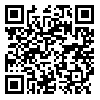BibTeX | RIS | EndNote | Medlars | ProCite | Reference Manager | RefWorks
Send citation to:
URL: http://jmed.ssu.ac.ir/article-1-65-en.html
Introduction: After two decades of expansion of universities of medical sciences and increasing the number of students as one of the most attainable solutions to overcome sub-standard status of Iranian workforce in health section, quality of medical education has recently taken priority in national health plans. The purpose of this study was designing a benchmark tool for determining differences in the field of education among schools offering nutrition programs in Iran by stratifying their educational services.
Methods: To measure the educational performance of schools providing nutrition programs nationwide, a benchmarking tool consisting of more than 50 indicators was developed by a special committee via brainstorming and nominal group. The weight given to each indicator was defined through consensus developing methods. Each school was asked to introduce a representative who would complete a questionnaire designed to collect schools’ information. Next, all the divisions were visited by one of the project's members and the school’s representative. Then, data retrieval was performed and verified at the project’s office. The average score of each school for each indicator was calculated. Finally, a special computer software was applied to perform the final analysis.
Results: A total of 50 indicators were designed in the form of tree diagram and were weighted via consensus agreement. The medical universities offering nutritional programs were compared using the designed model.
Conclusion: This study defined the educational strengths and weaknesses of nutrition program in Iranian schools that could be used as a measure for authorities to devise practical strategies for qualitative and quantitative improvement in medical education.
| Rights and permissions | |
 |
This work is licensed under a Creative Commons Attribution-NonCommercial 4.0 International License. |





